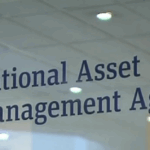The UK labour market recorded its sharpest monthly decline in payroll employment since the height of the Covid-19 pandemic, according to new official data that signals deepening weakness in the jobs outlook.
Figures released by HM Revenue & Customs show the number of people on company payrolls fell by more than 109,000 in May — the largest monthly drop since May 2020. On an annual basis, payroll employment has shrunk by 274,000. Since Chancellor Rachel Reeves’s first budget in October, the decline has reached 276,000, raising alarm that rising employer costs — including the £25 billion hike in National Insurance contributions this spring — are weighing heavily on hiring.
The Office for National Statistics (ONS) also reported further signs of a slowdown in wage growth. Average pay excluding bonuses rose by 5.2% in the three months to April, down from 5.5% in the previous period and below market expectations. Including bonuses, wage growth eased to 5.3%.
This cooling comes despite a 6.7% increase in the minimum wage in April. “Wage pressures are clearly starting to ease as the economy slows,” said Yael Selfin, chief economist at KPMG UK. “This will limit workers’ bargaining power going forward.”
Meanwhile, the unemployment rate edged up to 4.6%, its highest level since the post-lockdown recovery in 2021. Job vacancies also fell by 63,000 to 736,000 — the 23rd consecutive quarterly decline — as businesses delay or freeze recruitment plans.
“There continues to be weakening in the labour market,” said ONS director of economic statistics Liz McKeown. “Some firms may be holding back from recruiting new workers or replacing those who leave.”
Despite the slowdown, wage growth remains historically high in the public sector, which saw a 5.6% increase compared to 5.1% in the private sector. Public sector pay is now growing at a faster pace for the first time in several years.
The worsening jobs data may influence the Bank of England’s decision on interest rates. With inflation rising to 3.5% in April and recent earnings data softening, analysts say pressure is building for further rate cuts.
“This helps cement expectations for rate cuts in August and November,” said James Smith of ING. Rob Wood of Pantheon Macroeconomics added: “The labour market looks in worse shape in May, which could tip the MPC into cutting again.”
Markets reacted swiftly to the data. Sterling dropped 0.6% against the dollar to $1.34, while gilt yields fell to 4.56%. The FTSE 100 and FTSE 250 both closed higher.
The figures arrive just ahead of Chancellor Reeves’s highly anticipated Spending Review on Wednesday, where she is expected to outline government spending plans for the next three years, alongside over £100 billion in capital investment. With economic pressures mounting and new GDP data due Thursday, concerns are growing that the UK’s post-election economic momentum may be short-lived.









